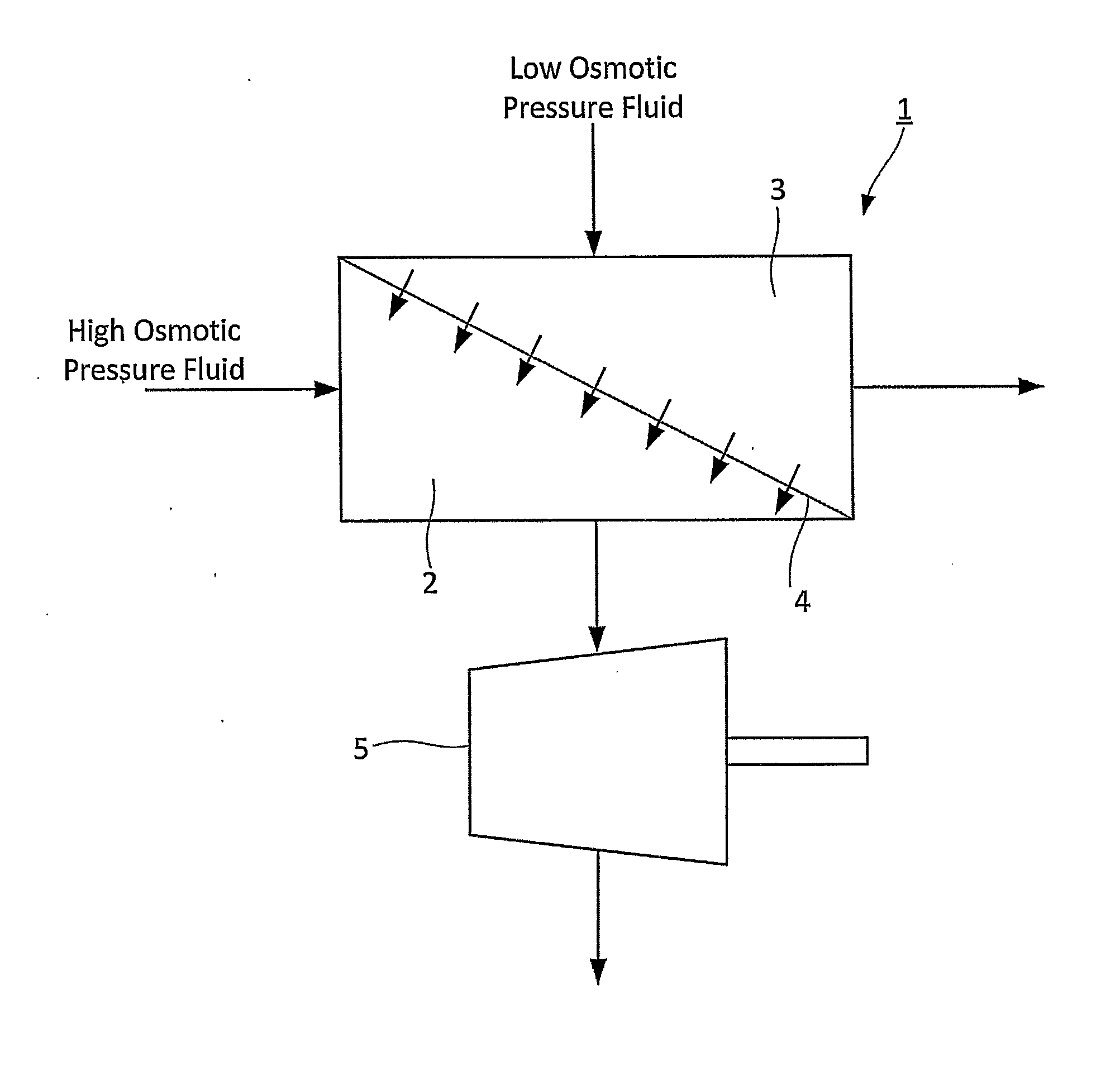Forward osmosis membrane flow system and composite semipermeable membrane for forward osmosis membrane flow system
a technology of forward osmosis membrane and flow system, which is applied in the direction of machine/engine, filtration separation, separation process, etc., can solve the problems of large amount of energy required and system using these membranes as forward osmosis membranes do not have a sufficiently high efficiency, so as to achieve high permeation flux, increase efficiency, and high permeation flux
- Summary
- Abstract
- Description
- Claims
- Application Information
AI Technical Summary
Benefits of technology
Problems solved by technology
Method used
Image
Examples
example 1
(Production of Porous Epoxy Resin Base Material)
[0069]An epoxy resin composition was prepared with 139 parts by weight of bisphenol A type epoxy resin (Epicoat 828, manufactured by Japan Epoxy Resins Co., Ltd.), 93.2 parts by weight of bisphenol A type epoxy resin (Epicoat 1010, manufactured by Japan Epoxy Resins Co., Ltd.), 52 parts by weight of bis(4-aminocyclohexyl)methane, and 500 parts by weight of polyethylene glycol 200 (manufactured by Sanyo Chemical Industries, Ltd). A cylindrical mold (with an outer diameter of 35 cm and an inner diameter of 10.5 cm) was filled with the epoxy resin composition up to a height of 30 cm, which was then room-temperature cured at 25° C. for 12 hours and further was allowed to reaction-cured at 130° C. for 18 hours. Thus, a cylindrical resin block was produced. While being rotated around the cylindrical axis, the resin block was sliced continuously at a thickness of 145 μm from the surface thereof using a cutting device (manufactured by Toshiba ...
example 2
[0072]A composite semipermeable membrane of Example 2 was obtained in the same manner as in Example 1 except that the cutting thickness of the resin block was changed to 90 μm in producing the porous epoxy resin membrane. The composite semipermeable membrane according to Example 2 thus finally obtained had a thickness of 80 μm.
example 3
[0073]A composite semipermeable membrane of Example 2 was obtained in the same manner as in Example 1 except that the cutting thickness of the resin block was changed to 55 μm in producing the porous epoxy resin membrane. The composite semipermeable membrane according to Example 3 thus finally obtained had a thickness of 50 μm.
PUM
| Property | Measurement | Unit |
|---|---|---|
| thickness | aaaaa | aaaaa |
| osmotic pressure | aaaaa | aaaaa |
| osmotic pressure | aaaaa | aaaaa |
Abstract
Description
Claims
Application Information
 Login to View More
Login to View More - R&D
- Intellectual Property
- Life Sciences
- Materials
- Tech Scout
- Unparalleled Data Quality
- Higher Quality Content
- 60% Fewer Hallucinations
Browse by: Latest US Patents, China's latest patents, Technical Efficacy Thesaurus, Application Domain, Technology Topic, Popular Technical Reports.
© 2025 PatSnap. All rights reserved.Legal|Privacy policy|Modern Slavery Act Transparency Statement|Sitemap|About US| Contact US: help@patsnap.com


